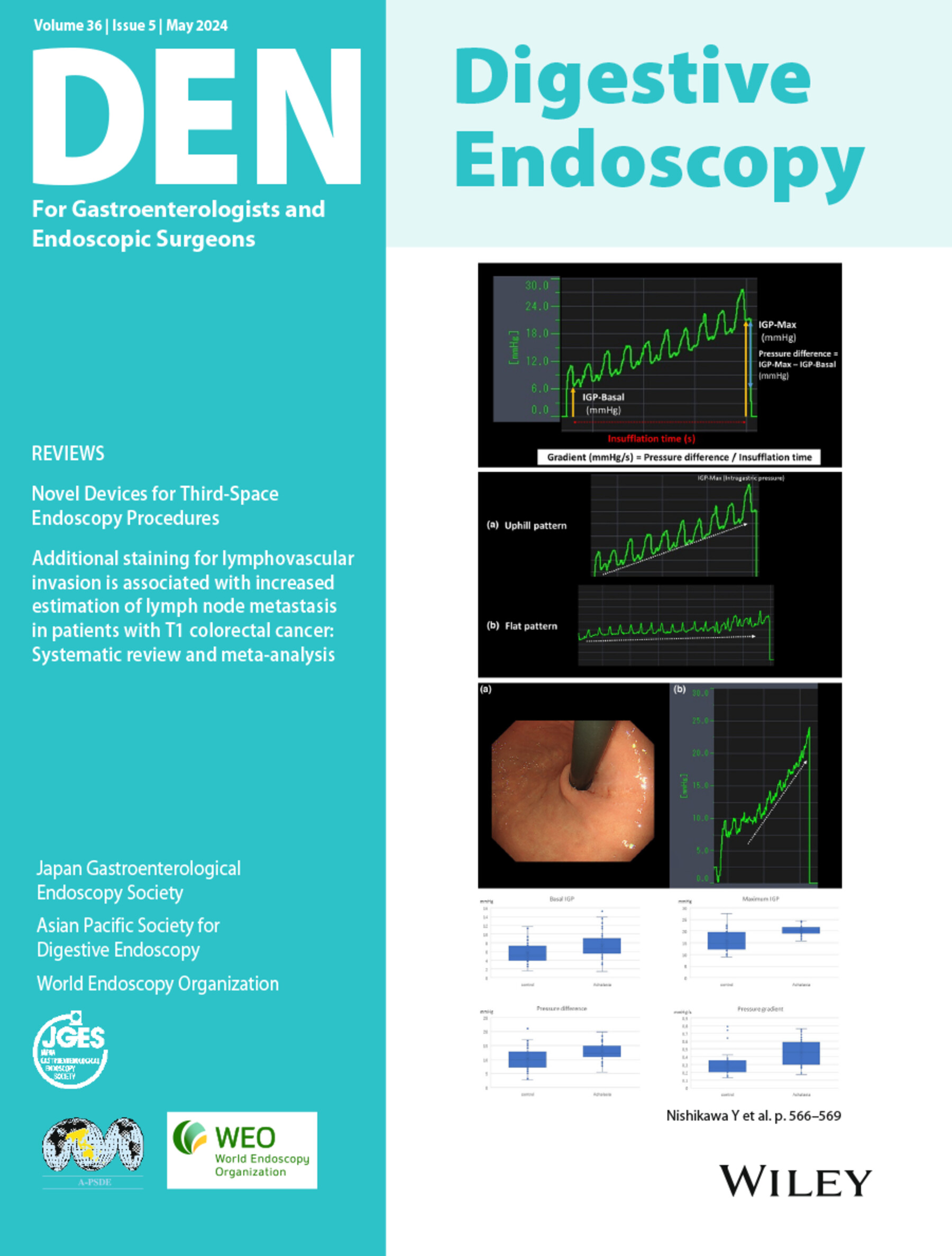Endoscopic features differentiating non-Helicobacter pylori Helicobacter-induced gastric mucosa-associated lymphoid tissue lymphoma with a nodular gastritis-like appearance and H. pylori-induced conventional nodular gastritis
Abstract
Objectives
Conventional nodular gastritis has been known to be caused by Helicobacter pylori infection. Several cases of gastric mucosa-associated lymphoid tissue (MALT) lymphoma with non-H. pylori Helicobacters (NHPH) exhibit endoscopic findings resembling nodular gastritis. Considering the differences in malignancy, distinguishing between these two conditions is crucial. This study aimed to identify the distinguishing endoscopic features of NHPH-induced gastric MALT lymphoma with nodular gastritis-like appearance (NHPHi-MNG) and H.-induced conventional nodular gastritis (HPi-NG).
Methods
Between 2011 and 2022, we analyzed 17 patients with NHPHi-MNG and 50 patients with HPi-NG at Hiroshima University Hospital and evaluated nodule morphology and distribution patterns.
Results
Compared with the HPi-NG group, the NHPHi-MNG group exhibited significantly larger nodules (2.5 vs. 2.0 mm, P < 0.05) with protruded morphology (protruded/superficial, elevated: 14/3 vs. 8/42, P < 0.05), most prominently in the gastric angulus. The variability in nodule size was significantly higher in the NHPHi-MNG group than in the HPi-NG group (0.85 vs. 0.37 mm, P < 0.05), reflecting nodule heterogeneity. The distance from the gastric angulus to the proximal end of the nodular lesions was significantly greater in the NHPHi-MNG group than in the HPi-NG group (4.4 vs. 1.7 cm, P < 0.05). The nodules in the HPi-NG group were smaller, superficial, elevated, and most prominent in the gastric antrum compared with those in the NHPHi-MNG group. They were predominantly distributed in the gastric antrum with a homogeneous morphology.
Conclusion
NHPHi-MNG and HPi-NG can be endoscopically differentiated according to nodule morphology and distribution. Recognizing these distinguishing features is essential for an accurate diagnosis.


 求助内容:
求助内容: 应助结果提醒方式:
应助结果提醒方式:


